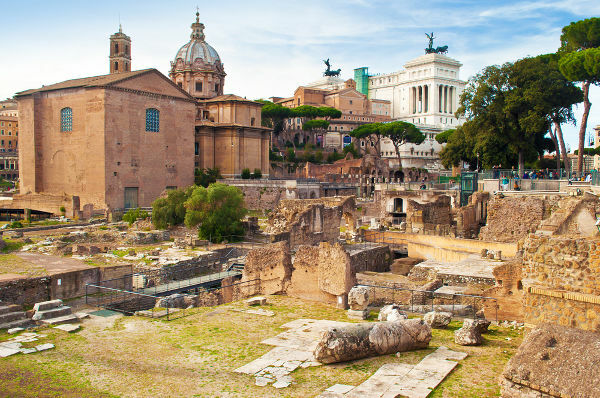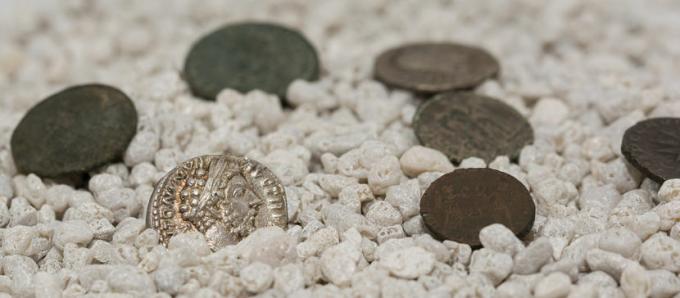THE High Middle Ages is one of the phases of Middle Ages, being established by historians as a part of the period division. It encompasses events from the 5th to the 10th century and is marked as a period of great change in Western Europe. These changes led to the construction of the classic model when referring to the medieval: the feudalism.
The High Middle Ages had as its starting point the breakdown of Roman Empire from the west and the fixation of germanic peoples in these territories. New features were being developed in Europe due to the fusion of the Germanic and Roman culture. During this period, the consolidation of the Church and its projection as an important institution stood out.
Accessalso: Byzantine Empire: a great European empire existing in the High Middle Ages
Middle Ages Division
The Middle Ages is one of the periods of human history, according to the division made by historians, and this period in particular is divided into two major phases that point to different moments in Europe Western. Altogether, the Middle Ages extended from the fifth century, with the removal of Romulus Augustus from the Roman throne, in 476, to the XV century, with the fall of Constantinople for the Ottomans, in 1453.
Within the Middle Ages, we have:
High Middle Ages: 5th to 10th century;
low middle age: 11th to 15th century.
In this text, we will specifically analyze the High Middle Ages.
Beginning of the Middle Ages and the end of the Roman Empire

The Middle Ages and, consequently, the High Middle Ages, began with the disintegration (the end) of the Western Roman Empire. This event did not cause the changes to happen immediately, but it started a process which spanned centuries and generated profound changes in Western Europe.
The end of the Western Roman Empire was the end result of a crisis that stretched back to the third century. Roman decadence is explained by a series of crises that hit the empire: crisispolitics, crisiseconomical and convulsionSocial. The last element of this decay was the arrival of dozens of Germanic peoples.
The crisis in the Roman economy is directly related to the crisis of the slave system of the empire. Roman productivity depended largely on slave labor, and when the number of slaves began to fall from the second century onwards, the Roman economy felt the brunt of that fall. With reduced productivity, the price of the most basic items increased and the economy deregulated.
THE political crisis is also a relevant factor, as corruption and the dispute for power in Rome were factors that brought instability for an empire that was already suffering from a severe economic crisis and growing dissatisfaction Social. This dissatisfaction was caused by the social inequality that existed in the empire. The poor's dissatisfaction with Rome made them support groups of invaders that reached the lands of the empire: the Germans.
The Germanic invasions had been going on for centuries, but they gained strength from the third century. The Germans were peoples who inhabited the north of the Roman lands and who began to migrate to the lands of Rome. As they were not authorized to enter them, the exit took place through the war.
The Germanic invasions were the big factor that tore down an empire that was already quite disorganized. Every Germanic people that migrated could count on up to 80 thousand people (including warriors and non-warriors). There were dozens of peoples migrating, such as the vandals, you francs, you Saxons, between others.
The reasons that explain the migrations of the Germans are debated by historians to this day, but it is believed that they were in escape: firstly, due to the arrival of more powerful peoples, such as the huns (who were migrating from Central Asia); later, to search milder climates and most fertile lands in order to survive.
The Germans constantly plundered and destroyed the Roman lands and reached Rome, the capital of the empire. In 410, the Visigoths sacked Rome; in 453, the Huns were bribed not to attack Rome; in 455, it was the turn of the vandals to plunder the capital of the empire; finally, the Heruli attacked her, in 476, and overthrew the last Roman emperor.
The power vacuum that followed the collapse of the Roman Empire enabled the Germans to settle in Western Europe and form their own kingdoms. These places developed by mixing Germanic and Roman traditions, and this mixture shaped the characteristics of Europe in the Middle Ages.
Accessalso: How the Catholic Church established itself in medieval Europe
European context in the High Middle Ages
The High Middle Ages were a period of great transformations for Europe, the way of life based on the Roman tradition changed and new realities emerged with the arrival of the Germans. Here is some information that we can highlight:
ruralization
After the Western Roman Empire ceased to exist, Europe underwent a strong ruralization. With that, the big cities emptied themselves and the population migrated, en masse, to the countryside. This was mainly caused by the devastation brought by the Germans, as they attacked the big cities with the aim of plundering them.
In addition, the arrival of the Germans affected local food producers (such as the Iberian Peninsula) and trade. With less production and unstable trade, food shortages began in cities. In short, the Germans brought starvation and violence to the great Roman cities, and this caused thousands of people to seek refuge in isolated places.
population drop
The disintegration of the Roman Empire was such a catastrophic event that it even resulted in reduction in population number European. This drop in population was the result of wars, between Romans and Germans; hunger, caused by lack of food; and the diseases that have spread as a result of war and famine. It was not until the middle of the High Middle Ages (8th century) that the population began to grow again in Europe.
forms of work
The High Middle Ages were also marked by the consolidation of a new form of work in Europe: the bondage. This way of working was structured as a consequence of the ruralization of Europe, as millions of people they moved to the countryside and began to settle around large Roman estates rich.
They did this to seek out the food and security they lacked in Roman cities. With that, a dependency relationshipandexploration, in which the serf/peasant depended on the land to survive and the owner of the land allowed this peasant to earn his livelihood from the land, as long as he paid taxes to use it, as well as his installations.
This way of working very consistently shaped medieval society. Was a societystatus, and therefore there was little possibility of social mobility. Wealth was something defined, above all, by nobility, and nobility came from blood. There were, therefore, the noble and the peasant, but there was also the clergy, that is, the representatives of the Catholic Church.
Vassalage
On the political issue, a power relationship developed in the High Middle Ages that was one of the great marks of the medieval period: the vassalage. This relationship took place as a necessity of the kings to guarantee the fidelity of their subjects. It was developed during the existence of the EmpireCarolingian, between the 7th and 8th centuries.
The vassalage was necessary because, in the High Middle Ages, the king was not an absolute and all-powerful ruler. As such, he needed to reinforce his power, and the support of the nobles who made up his kingdom was essential to that. Thus, a relationship of loyalty emerged to support kings and nobles.
In vassalage, king and noble swore loyalty each other. O King (sovereign) gave part of his land to the noble (vassal) and, in return, the latter provided him with help to govern the kingdom and joined the war when necessary.
Accessalso: The origin of the term "dark ages", commonly used to define the Middle Ages
Economy

Being a ruralized world, the economy in the High Middle Ages was basically dependent on the agriculture. Thus, the wealth obtained was through the planting of grains, carried out by the peasants. As a world marked by isolation and low agricultural productivity, the trade was quite weak.
There were some exchanges between neighboring fiefs and some itinerant merchants who set up small temporary fairs. A considerable part of this trade was carried out through exchange, and the circulating currency was almost non-existent. When coins were used, it was mostly for emergency moments.
As the cities were sparsely inhabited, handicrafts and other types of crafts were little present. Handicraft was not very productive due to a series of factors: there were few consumers, few raw material and little skilled labor for the activity.

